What is a window manager?#
Put simply, a window manager organises your windows and decides how GUI elements are placed.
There are two main types of Window Managers (WMs):
- Stacking Window Managers (SWMs)
- Tiling Window Managers (TWMs)
An SWM is your vanilla window manager. You use your mouse to stack, arrange and rearrange windows. There’s normally a system tray, and a button to minimise all apps to it.
A TWM is a bit more advanced tham an SWM. Their main focus is to increase productivity by keeping your hands on the keyboard.
→ There’s keybinds for all functions, however, they have a much steeper learning curve.
My advice?#
Use a stacking window manager if you use the Nano text editor, and use a tiling window manager if you use Vim, Neovim or Emacs.
Different SWMs#
This section will cover Stacking Window Managers.
KDE Plasma
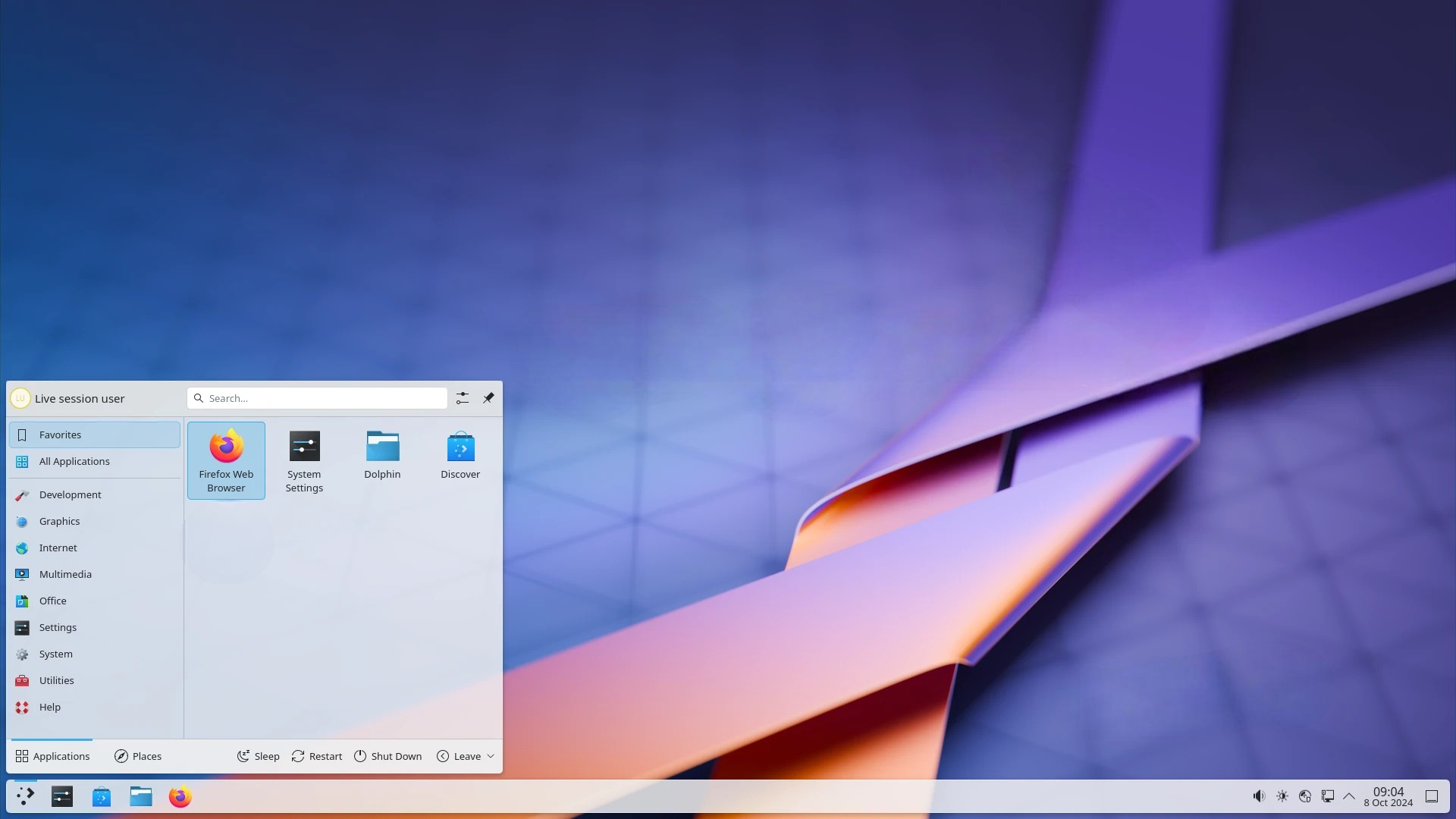
To just install KDE Plasma, use the below command:
# pacman -S plasma
The packages below provide a more integrated desktop experience for KDE Plasma
# pacman -S konsole dolphin ark kwrite kcalc spectacle krunner partitionmanager
| Packages | Description |
|---|---|
| plasma | KDE Plasma window manager. |
| konsole | Terminal. |
| dolphin | File manager. |
| ark | Archiving Tool. |
| kwrite | Text editor. |
| kcalc | Scientific calculator. |
| spectacle | Screenshot capture utility. |
| krunner | Quick drop-down desktop search. |
| partitionmanager | Disk & partition manager. |
GNOME
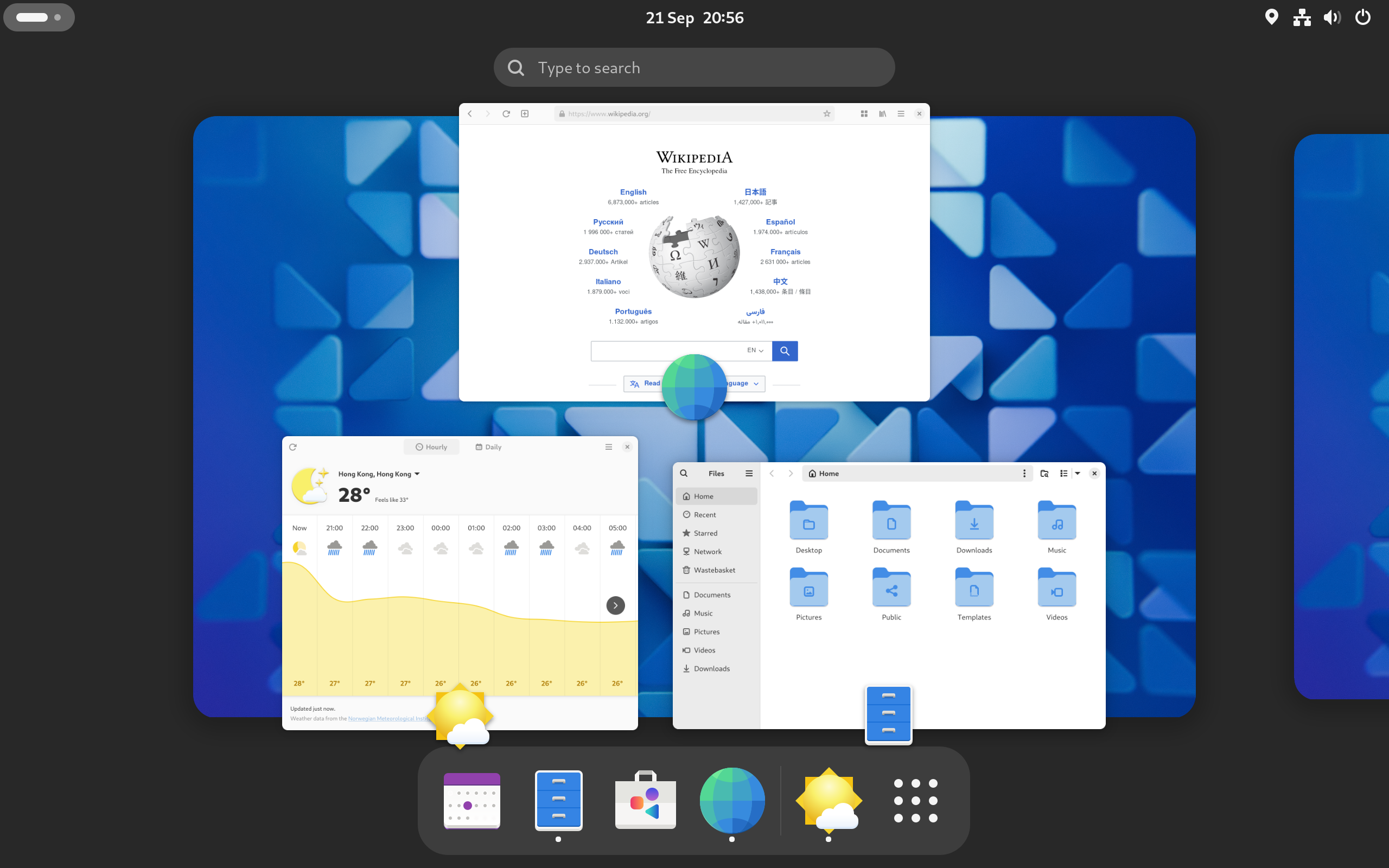
To install GNOME, use the below command:
# pacman -S gnome gnome-extra
gnome-extra is for a more integrated desktop experience, and includes a bundle of apps to facilitate that.
Enlightenment
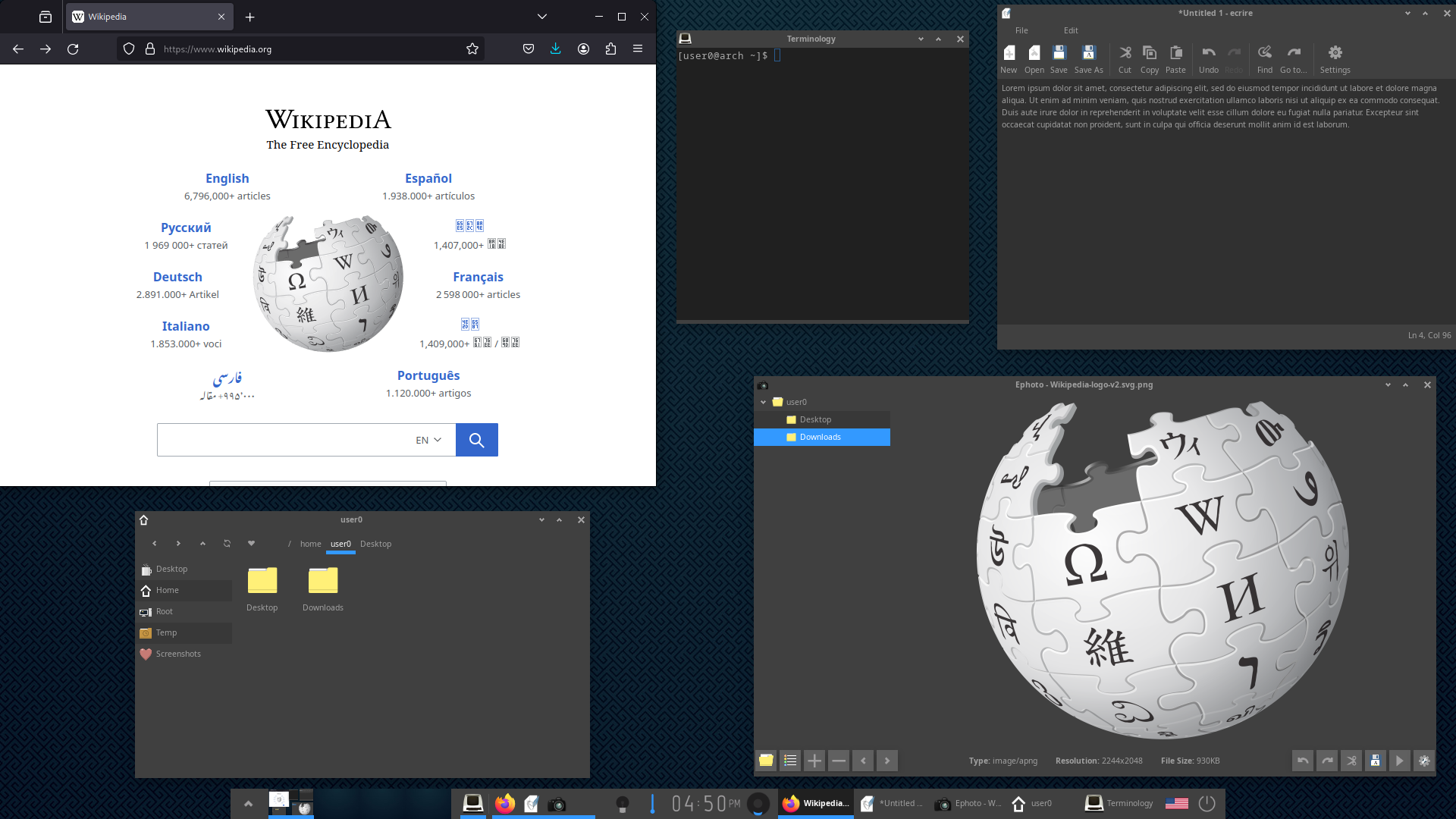
Install Enlightenment, as shown below:
# pacman -S enlightenment ecrire ephoto evisum rage terminology
The packages that aren’t enlightenment provide a more integrated desktop environment.
| Packages | Description |
|---|---|
| enlightenment | Enlightenment window manager |
| terminology | Terminal |
| ecrire | Text editor |
| evisum | Process viewer, similar to Task Manager on Windows |
| ephoto | Photo viewer |
| rage | Video viewer |
LXQt
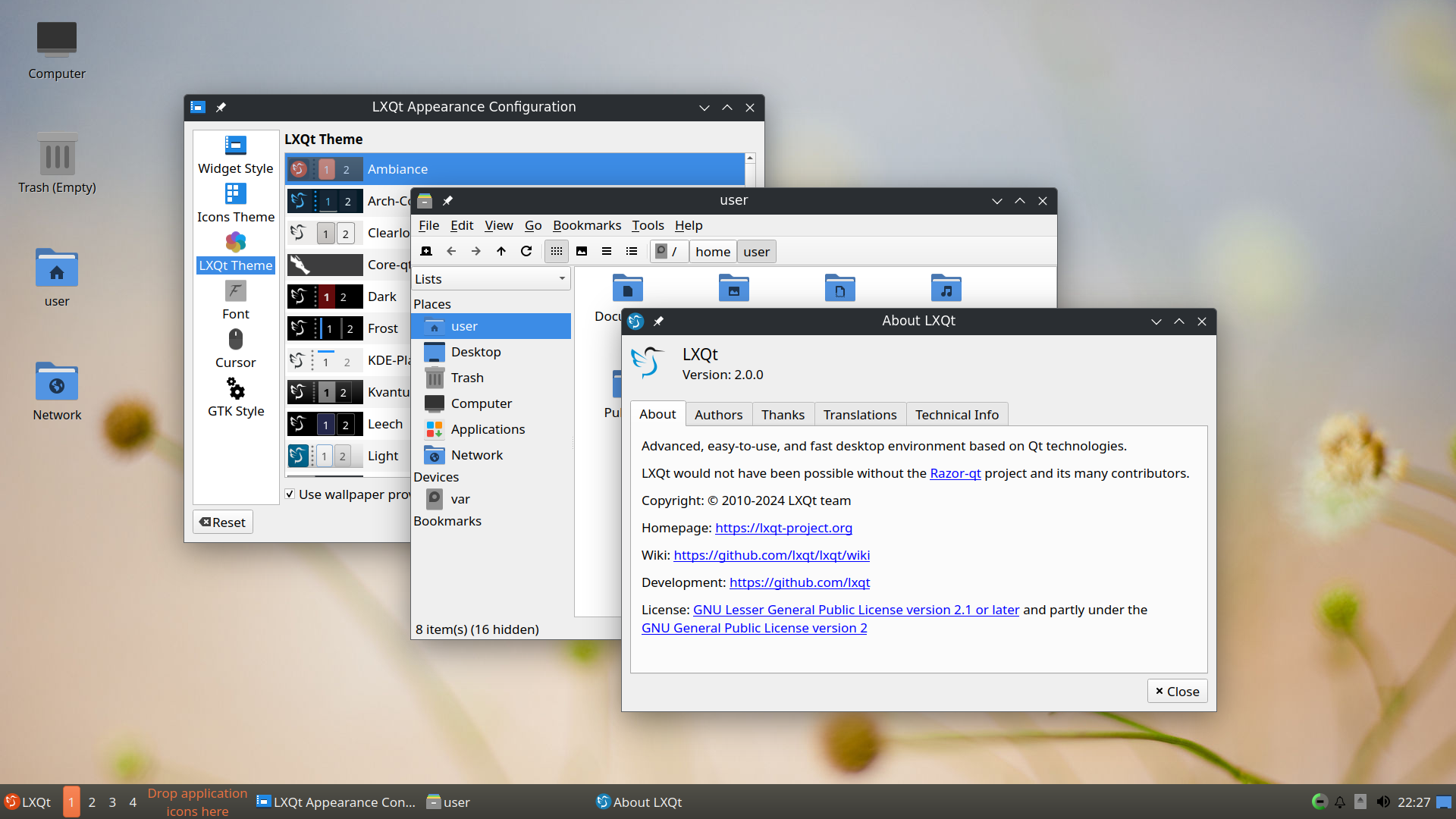
To install LXQt, use the below command:
# pacman -S lxqt
XFCE
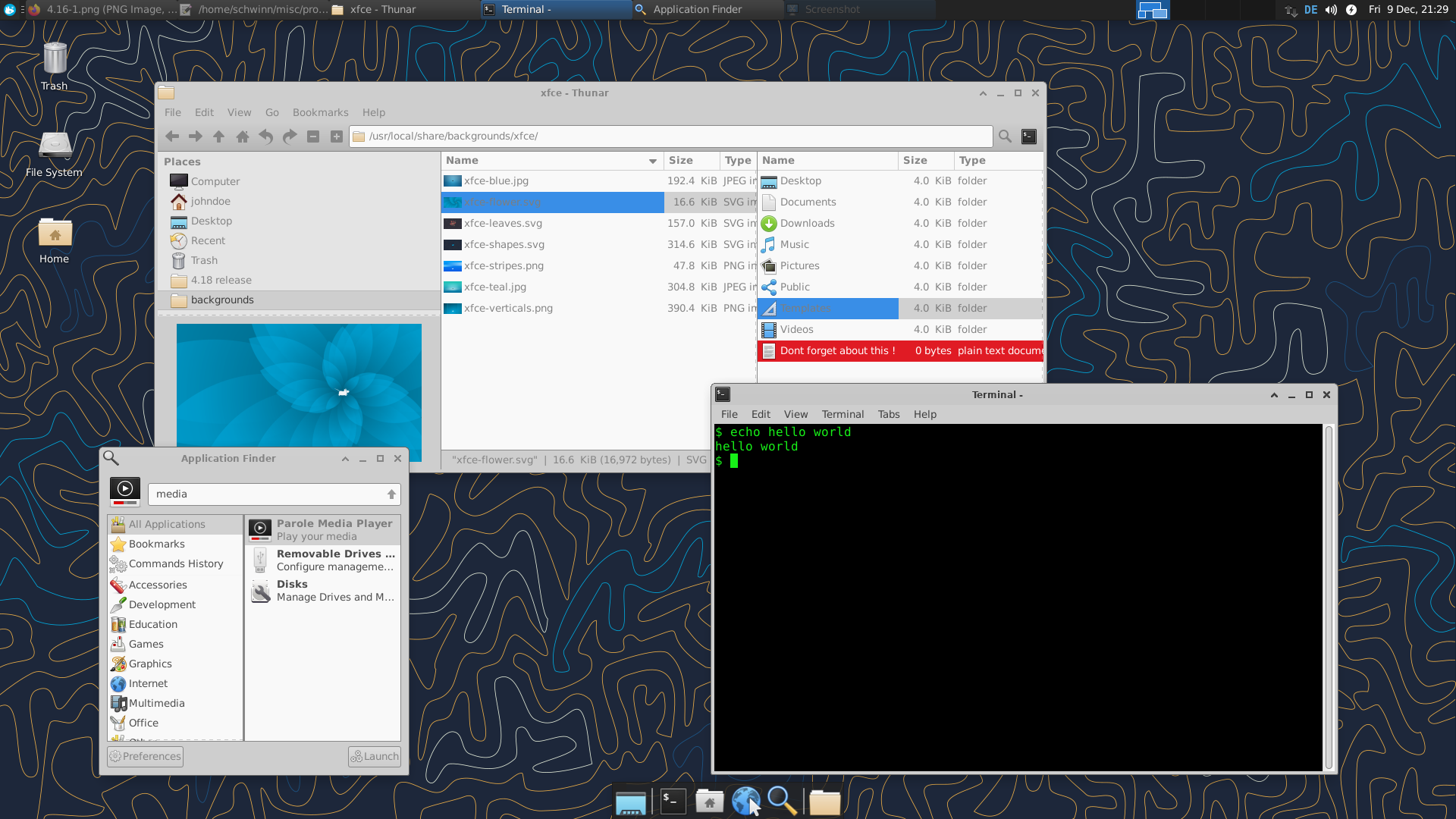
To install XFCE, use the below command:
# pacman -S xfce xfce4-goodies
xfce4-goodies is for a more integrated desktop experience, and includes a bundle of apps to facilitate that.
Different TWMs#
Images used are meant to demonstrate their customisability and do not reflect what they look like out-of-the-box.
Hyprland
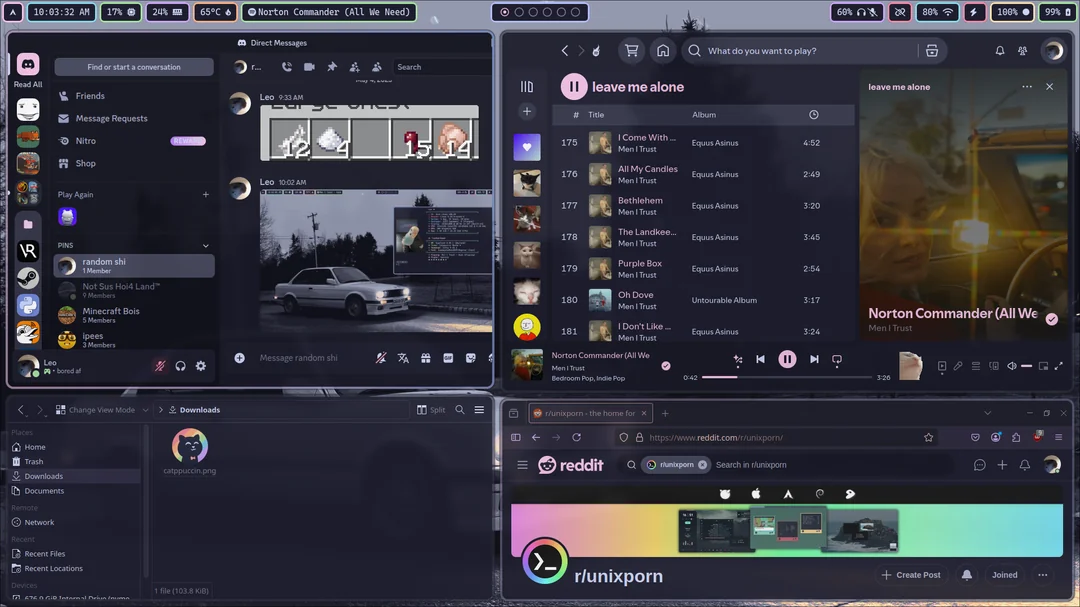
To install hyprland, use the below command:
# pacman -S hyprland
Niri
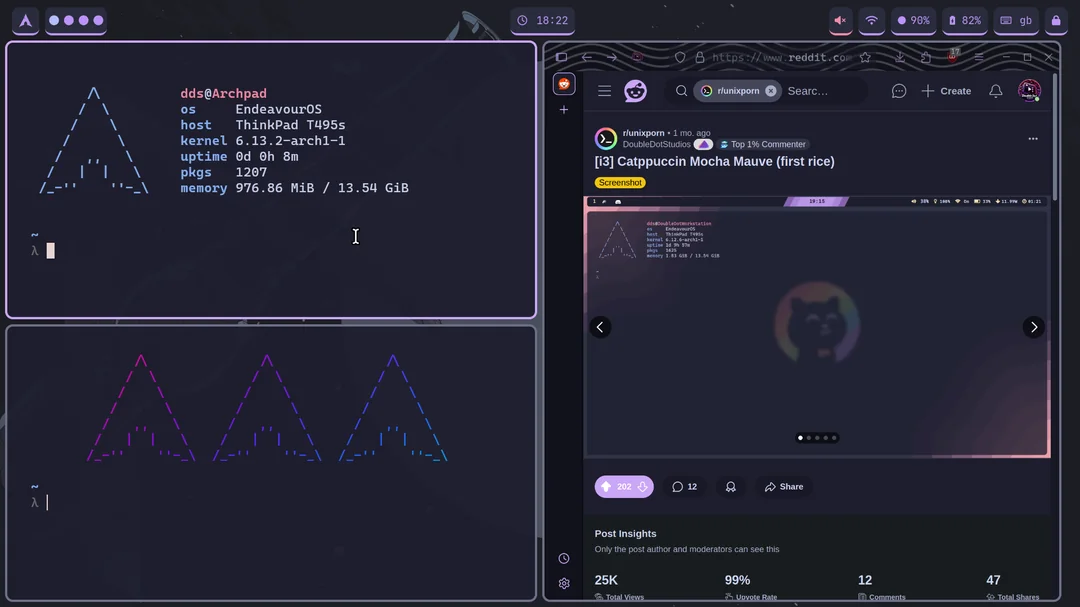
Install Niri, as shown below:
# pacman -S niri
Sway
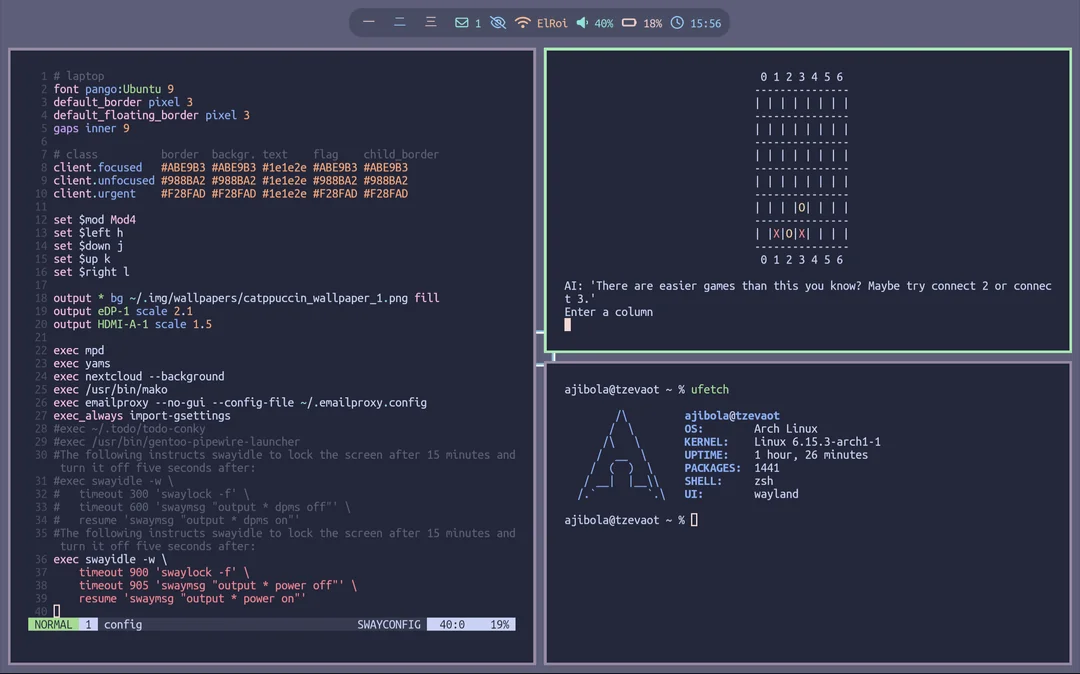
Install Sway, as shown below:
# pacman -S sway swaylock swaybg swayidle
river
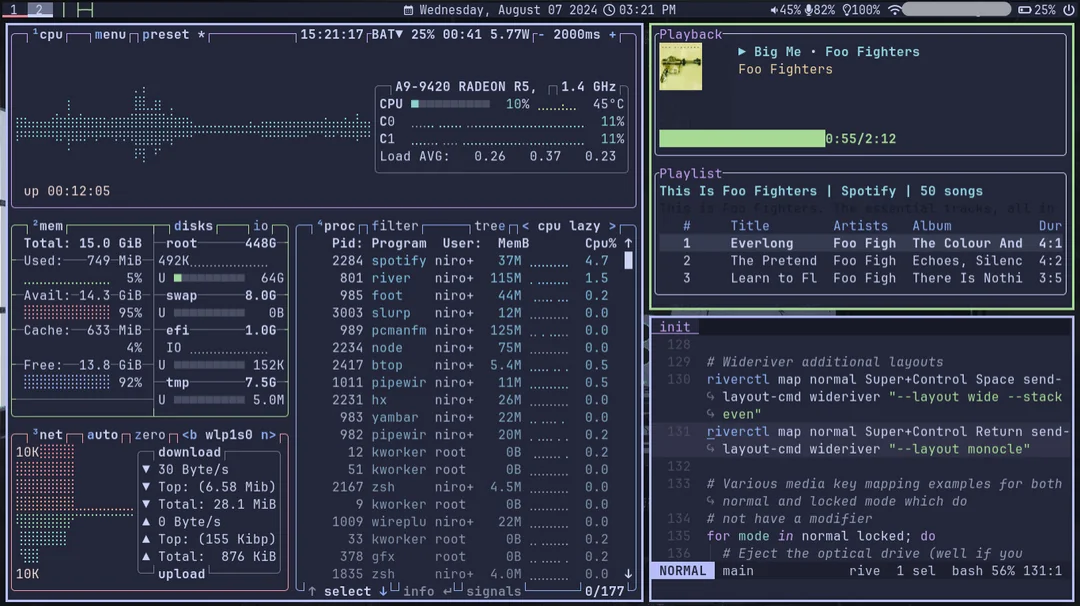
To install river, use the below command:
# pacman -S river
Installing a display manager#
Now that you have installed a window manager, you will need to install a display manager.
There are two main greeters in Arch Linux: sddm and gdm.
If you have installed GNOME as your desktop environment, install and enable GDM as shown below:
# pacman -S gdm
# systemctl enable gdm.service
If you have installed any other window manager, install and enable SDDM as shown below:
# pacman -S sddm
# systemctl enable sddm.service
Setting up sound on Linux#
Note
This step is optional, but allows you to enjoy bluetooth and configuring sound devices on your computer.
Below is a command that installs a bunch of applications somewhat relating to sound
# pacman -S alsa-utils bluez bluez-utils pipewire wireplumber pipewire-alsa pipewire-pulse
| Packages | Description |
|---|---|
| alsa-utils | Allows you to configure sound devices in the terminal |
| bluez | Provides bluetooth functionality |
| bluez-utils | Allows you to configure bluetooth in the terminal |
| pipewire | Audio and video server for Linux. Allows you to screen-capture and provides desktop sound |
| wireplumbler | Tells PipeWire what to do with audio and video devices |
| pipewire-alsa | Provides sound drivers |
| pipewire-pulse | A compatibility layer that allows legacy PulseAudio apps to work on PipeWire |
Then, enable bluetooth, as shown below:
# pacman -S bluetooth.service
If at any point, you experience sound issues when running Wine applications, you may need to install an audio driver package as shown below:
# pacman -Syu lib32-alsa-lib lib32-alsa-plugins lib32-pipewire
Now, installation is fully complete. For some quality-of-life features, check out the extras page.
To enjoy graphics on Arch, run the below command:
$ reboot